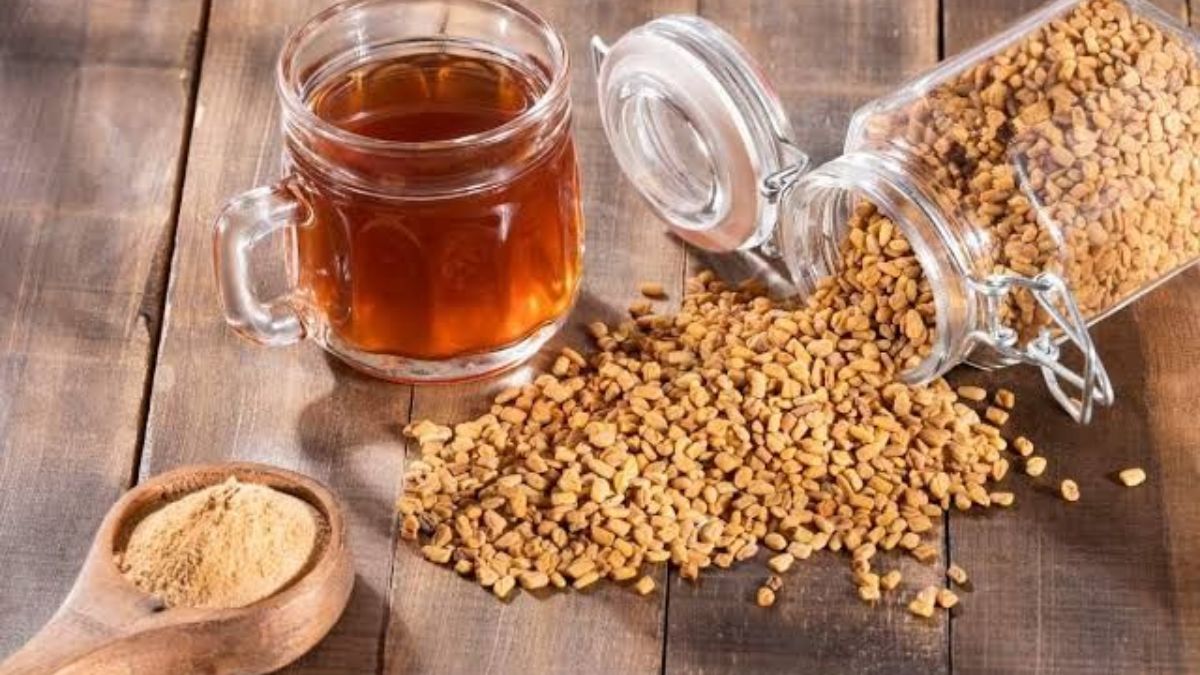In the world of natural remedies and traditional medicine, few plants have stood the test of time quite like foenegriek. Also known as fenugreek, this aromatic herb has been cultivated for thousands of years across the Middle East, India, and the Mediterranean. Revered not only for its distinctive flavor but also for its impressive medicinal properties, foenegriek continues to gain popularity in modern wellness circles. Whether used as a spice in curries, a supplement for blood sugar control, or a galactagogue to support breastfeeding mothers, this humble seed offers a wealth of benefits backed by both tradition and science. In this comprehensive article, we’ll explore what foenegriek is, its nutritional composition, proven health advantages, culinary applications, potential side effects, and how you can safely incorporate it into your daily life.
Table of Contents
What Is Foenegriek?
Foenegriek (Trigonella foenum-graecum) is an annual plant belonging to the Fabaceae family—the same family as peas and beans. Native to southern Europe, the Mediterranean region, and Western Asia, it’s now widely grown in India, which is the largest global producer. The plant grows up to two feet tall and produces small, green leaves, white flowers, and long, slender pods containing hard, yellowish-brown seeds.
Both the leaves and seeds of the foenegriek plant are used, though the seeds are far more common in cooking and herbal medicine. They have a slightly bitter, nutty taste reminiscent of maple syrup or burnt sugar—thanks to the presence of sotolon, a compound also found in artificial maple flavoring. In Indian cuisine, dried foenegriek leaves (known as kasuri methi) are used as a seasoning, while the seeds are often roasted, ground, or soaked before use.
Historically, foenegrie’k was used by ancient Egyptians for embalming and by Greek physicians like Hippocrates for treating digestive and respiratory ailments. Traditional Chinese and Ayurvedic medicine systems have long employed it to enhance vitality, support lactation, and manage metabolic disorders.
Nutritional Profile of Foenegriek
One of the reasons foenegriek is so valued is its rich nutritional content. A single tablespoon (about 11 grams) of whole foenegrie’k seeds provides:
- Calories: 35
- Protein: 2.5 g
- Fat: 0.7 g
- Carbohydrates: 6 g (including 2.7 g of fiber)
- Iron: 20% of the Daily Value (DV)
- Magnesium: 5% DV
- Manganese: 7% DV
- Vitamin B6: 4% DV
Beyond these basic nutrients, foenegrie’k seeds are packed with bioactive compounds such as:
- Saponins: Known for cholesterol-lowering and anti-inflammatory effects.
- Flavonoids: Antioxidants that protect cells from oxidative stress.
- Alkaloids (like trigonelline): May support brain health and glucose metabolism.
- 4-Hydroxyisoleucine: An amino acid derivative shown to improve insulin sensitivity.
This potent combination makes foenegriek much more than just a kitchen spice—it’s a functional food with therapeutic potential.
Proven Health Benefits of Foenegriek
1. Supports Blood Sugar Control
One of the most well-researched benefits of foenegriek is its ability to help regulate blood glucose levels. Multiple clinical studies have demonstrated that consuming foenegriek seeds or extract can significantly lower fasting blood sugar and improve glucose tolerance in people with type 2 diabetes.
The mechanism appears to involve several pathways:
- Slowing carbohydrate digestion and absorption due to high fiber content.
- Stimulating insulin secretion from pancreatic beta cells.
- Enhancing insulin sensitivity in peripheral tissues.
In one randomized controlled trial, participants who took 10 grams of foenegriek seed powder daily for eight weeks saw a 25% reduction in fasting blood glucose compared to the control group. While promising, it’s important to note that foenegrie’k should complement—not replace—standard diabetes care under medical supervision.
2. May Boost Testosterone and Male Vitality
Men’s health is another area where foenegriek shows promise. Several studies suggest that foenegriek supplementation can increase testosterone levels, improve libido, and enhance sexual performance.
A 2010 study published in Phytotherapy Research found that men aged 25–52 who took a foenegriek extract (Testofen®) for six weeks reported significant improvements in sexual arousal, energy, and overall well-being. Another trial showed increased muscle strength and lean body mass in resistance-trained men taking foenegrie’k , likely due to hormonal modulation.
However, results aren’t universal, and more large-scale studies are needed. Still, the herb’s historical use as an aphrodisiac in traditional medicine aligns with emerging scientific evidence.
3. Enhances Breast Milk Production
For centuries, nursing mothers in India and the Middle East have turned to foenegriek to increase breast milk supply. Modern research supports this practice. The herb is classified as a galactagogue—an agent that promotes lactation.
A 2011 study in the Journal of Alternative and Complementary Medicine found that mothers who consumed foenegriek tea three times daily for two weeks experienced a noticeable increase in milk volume compared to those who drank placebo tea. The effect is thought to stem from phytoestrogens in the seeds that mimic estrogen and stimulate mammary gland activity.
While generally safe, breastfeeding women should consult a healthcare provider before using foenegriek, especially if they have hormone-sensitive conditions.
4. Aids Digestion and Reduces Inflammation
The high fiber content in foenegriek seeds supports healthy digestion by promoting regular bowel movements and feeding beneficial gut bacteria. Additionally, compounds like mucilage form a protective layer in the stomach lining, potentially easing heartburn and gastritis.
Animal studies also highlight foenegriek’s anti-inflammatory properties. Its saponins and flavonoids may inhibit pro-inflammatory cytokines, offering relief in conditions like arthritis. Though human trials are limited, topical applications of foenegrie’k paste have traditionally been used to soothe skin inflammation and wounds.
5. May Support Heart Health
By lowering LDL (“bad”) cholesterol and triglycerides while raising HDL (“good”) cholesterol, foenegrie’k contributes to cardiovascular wellness. The fiber binds to bile acids in the gut, prompting the liver to use circulating cholesterol to produce more bile—thus reducing overall cholesterol levels.
Furthermore, its antioxidant content helps prevent oxidation of LDL cholesterol, a key step in the development of atherosclerosis. While not a substitute for statins or other heart medications, foenegriek can be a valuable dietary addition for heart health maintenance.
Culinary Uses of Foenegriek
Beyond its health perks, foenegriek is a staple in many global cuisines. In Indian cooking, whole or ground seeds are used in spice blends like garam masala and curry powders. Roasting the seeds before grinding mellows their bitterness and enhances their nutty aroma.
Dried foenegrie’k leaves (kasuri methi) are crumbled into dals, paneer dishes, and vegetable curries for a subtle, earthy depth. In Ethiopian cuisine, the seeds are part of the berbere spice mix. In the West, foenegriek is sometimes used in imitation maple syrup due to its sotolon content.
You can also sprout foenegrie’k seeds for salads or brew them into a soothing herbal tea. For home cooks, start with small amounts—its strong flavor can easily overpower a dish.
How to Use Foenegriek Safely
While foenegrie’k is generally safe for most people when consumed in food amounts, higher doses (as in supplements) require caution:
- Pregnancy: Large doses may stimulate uterine contractions and should be avoided unless under medical guidance.
- Allergies: Those allergic to peanuts or chickpeas may react to foenegriek due to shared proteins.
- Medication Interactions: It can interact with blood thinners (like warfarin), diabetes drugs (risk of hypoglycemia), and thyroid medications.
- Side Effects: Mild gastrointestinal issues (gas, bloating) or a maple-like odor in sweat and urine are common but harmless.
Always choose high-quality, organic foenegriek products from reputable sources. If using supplements, follow dosage instructions and consult your doctor—especially if you have underlying health conditions.
Foenegriek in Traditional and Modern Medicine
In Ayurveda, foenegrie’k (known as “methi”) is considered warming and balancing for Kapha and Vata doshas. It’s prescribed for digestive weakness, respiratory congestion, and postpartum recovery. Traditional Persian medicine used it for kidney health and wound healing.
Today, foenegrie’k is available as capsules, powders, teas, and liquid extracts. Standardized extracts often contain specific concentrations of active compounds like 4-hydroxyisoleucine or saponins for targeted effects (e.g., blood sugar support).
Research continues to explore new applications—from anti-cancer properties (due to diosgenin, a steroidal saponin) to neuroprotection in Alzheimer’s disease. While exciting, these areas require more rigorous human trials before definitive claims can be made.
Sustainability and Cultivation
Foenegriek is a hardy, drought-tolerant crop that enriches soil through nitrogen fixation—making it environmentally sustainable. India, particularly the states of Rajasthan and Gujarat, leads global production, followed by China, Egypt, and Morocco.
Small-scale farmers benefit from its low input requirements and high market demand. However, ethical sourcing remains important to ensure fair wages and eco-friendly farming practices. Look for Fair Trade or organic certifications when purchasing foenegriek products.
Conclusion
From ancient apothecaries to modern supplement shelves, foenegrie’k has earned its place as a powerhouse herb with multifaceted benefits. Whether you’re seeking natural support for blood sugar balance, hoping to boost milk supply, or simply looking to add depth to your cooking, this versatile seed delivers on both flavor and function. With its rich history, impressive nutrient profile, and growing body of scientific validation, foenegrie’k truly bridges the gap between traditional wisdom and contemporary wellness.
As with any herbal remedy, moderation and informed use are key. Consult healthcare professionals before starting high-dose supplementation, especially if you’re pregnant, nursing, or managing chronic conditions. But for most people, incorporating foenegriek into meals or routines can be a simple, effective step toward better health. In a world increasingly turning back to nature for healing, foenegriek stands out as a timeless ally—rooted in the past, yet perfectly suited for our future.












